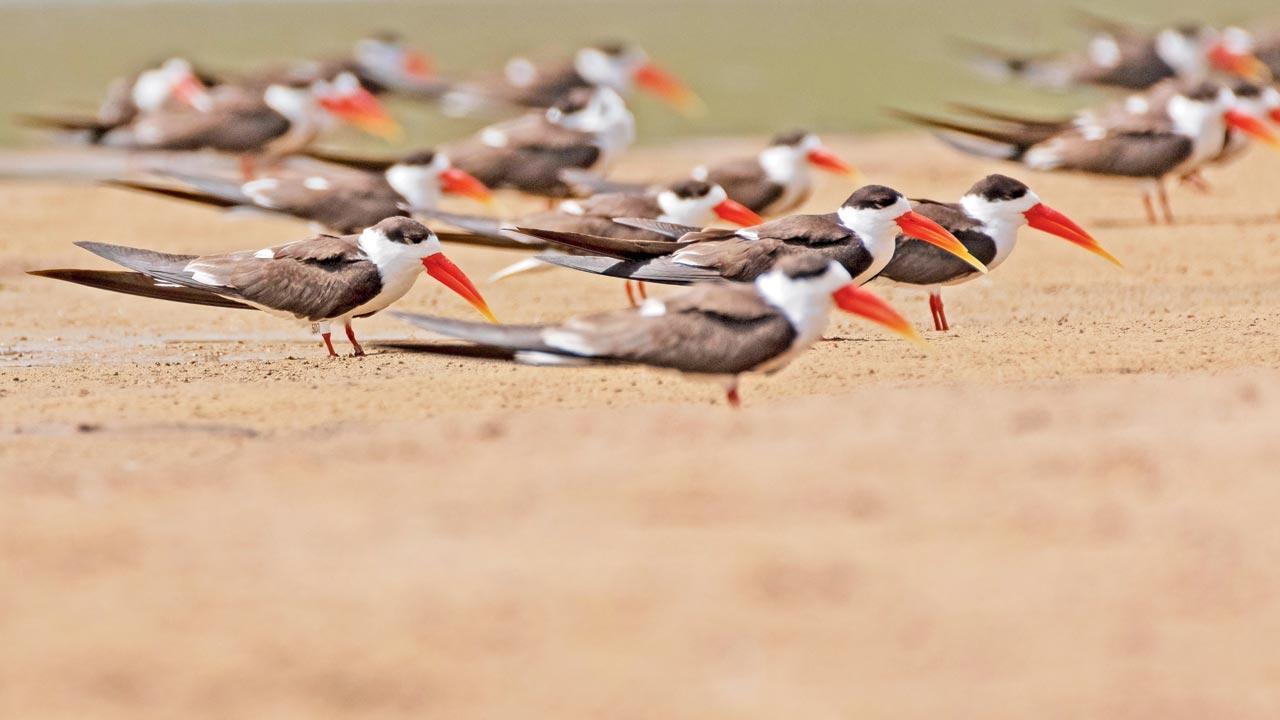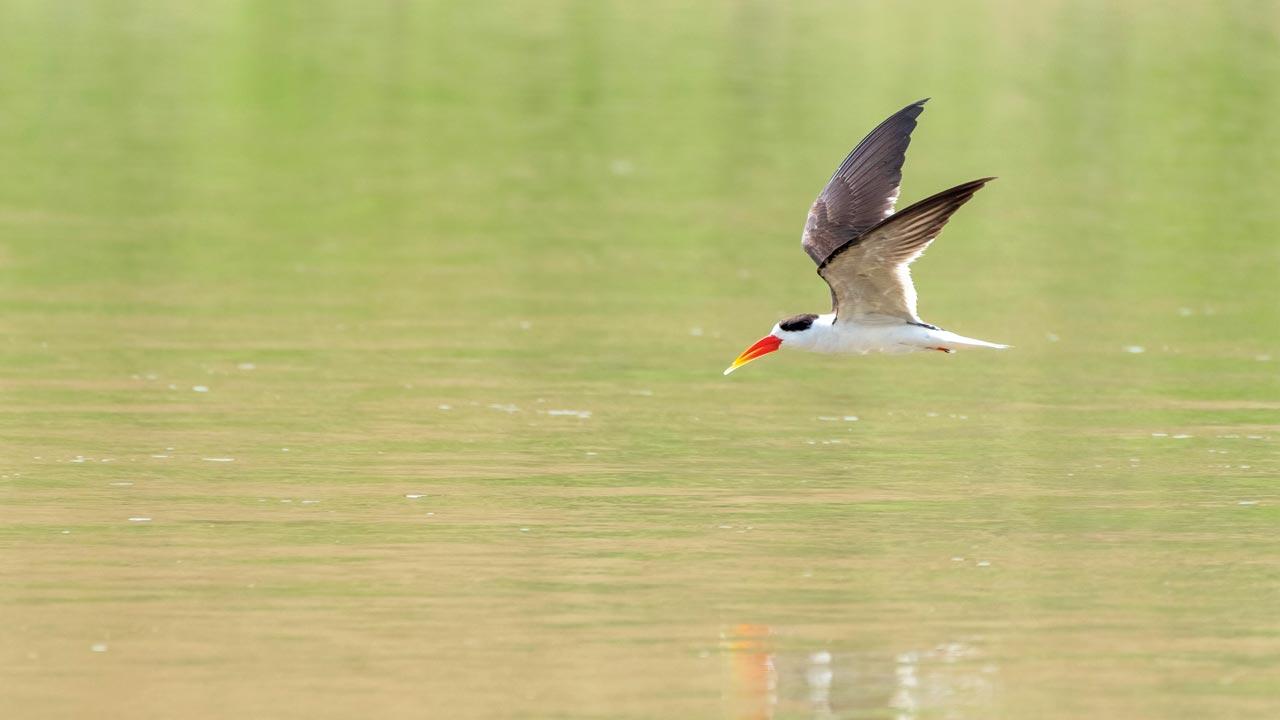Spend the weekend recording your sightings of and observations on Indian skimmers, and contribute to this citizen-generated data collection project

Indian skimmer. Pic Courtesy/Viraj Athalya
Type Indian skimmer into the search bar and a rather peculiar-looking bird will pop up. A seemingly ordinary-looking black and white avian with a large oddly-fitted orange bill that looks like an arts and crafts project gone wrong. If you watch videos of this bird feeding, you’ll know why skimmer is in its name.
ADVERTISEMENT
Flying low over water bodies, it skims the surface of the water with its lower mandible, looking for insect larvae, surface-dwelling fish, and crustaceans.

Some more digging, and you’re likely to land up on the Bombay Natural History Society (BNHS) website where you will learn that Indian skimmers have recently been listed on the IUCN Red List as endangered species. The website further states that earlier the bird was found across the Indian Subcontinent. Today, it can be spotted only in India, Pakistan, Bangladesh, Nepal, and Myanmar; it is considered extinct in Vietnam, Cambodia and Laos. Their breeding ground is mostly restricted to India and occasionally, West Bangladesh.
To help build more knowledge about the Indian skimmer’s population, BNHS in association with Bird Count India will host its fourth edition of the coordinated global Indian Skimmer Count. The first phase of this edition takes place this weekend at shortlisted potential sites in 19 Indian states where the bird is likely to be spotted. Maharashtra boasts of 10 such locations, including Bhandup Pumping Station and Panje in Navi Mumbai.
 Parveen Shaikh handles an Indian skimmer and marks the birds with a ring and colour bands
Parveen Shaikh handles an Indian skimmer and marks the birds with a ring and colour bands
Parveen Shaikh, scientist at BNHS, tells us, “This is a citizen-science initiative. The bird-watching community is efficient in helping gather data in large distributed ranges. Participants can upload their observations on the eBird mobile application. We will collate the data and release the report later.” More information along with instructions are available on the website. Birdwatchers, government institutions, Indian Bird Conservation Network (IBCN) members, NGOs, ornithologists, researchers, academicians and nature lovers are invited to participate.
On December 23 and 24 Register bnhs.org
Email skimmercount@bnhs.org
Free
 Subscribe today by clicking the link and stay updated with the latest news!" Click here!
Subscribe today by clicking the link and stay updated with the latest news!" Click here!







